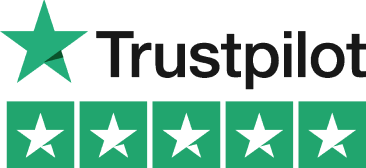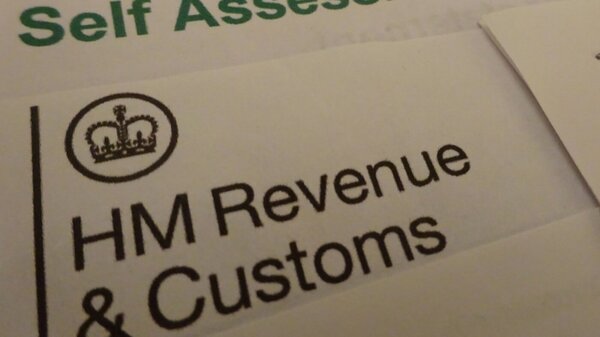Let’s Get Started
Tax and clothing might not sound like a natural pair, but if you're self-employed, a side hustler, or wear a uniform for work, understanding the rules could save you money. From VAT quirks to what you can (and can’t) claim, this guide breaks down everything you need to know about clothing-related tax in the UK for 2024/25.
What are clothing taxes all about?
When we talk about clothing taxes in the UK, we’re mainly referring to two things: the VAT buyers pay when purchasing clothes, and whether you can claim clothing as a tax-deductible expense.
Most adult clothing carries the standard 20% VAT rate, and the cost of clothing is a key factor in determining the VAT applied. However, children’s clothing and footwear (in appropriate sizes) are zero-rated, meaning no VAT is charged. For example, dresses for children that cost less than £110 per item can be zero-rated if they meet the criteria.
For businesses and employees, the big question is: “Can I claim this outfit on my taxes?” HMRC is famously strict about this, the general rule is that everyday clothing isn’t tax-deductible.
This applies even if you only wear certain items for work. The taxman considers whether clothing is worn for work or everyday purposes, viewing most items as serving a dual purpose.
When can you claim clothing on your taxes?
The taxman makes a clear distinction between ordinary clothing and items that qualify as legitimate business expenses. Everyday clothing doesn’t qualify as tax-deductible, even if purchased specifically for work. There must be a clear connection between the clothing expense and the income-generating activity for it to be deductible.
Protective clothing required for safety reasons is fully deductible. This includes hard hats, steel-toed boots, high-vis jackets, and other safety gear that are specifically designed to protect workers from workplace hazards. Protective clothing must be designed to protect the wearer from specific risks encountered in the workplace.
Performers and entertainers can usually claim costumes as legitimate expenses. A colleague who works as a part-time Santa each December can claim his red suit and beard as a business expense.
Employee uniform allowances and tax relief
If your job requires you to wear and maintain a uniform, you might be eligible for tax relief on the cost of cleaning and repairing your uniform. HMRC offers flat-rate expense allowances for many professions.
For example, ambulance staff can claim £185 per year, while nurses can claim £125 for uniform maintenance. To claim this relief, you don’t need receipts.
Simply complete a P87 form or include it in your Self Assessment tax return. The relief is paid at your highest tax rate.
If your employer provides your uniform, this isn’t a taxable benefit as long as it’s required for your job. However, clothing allowances may be taxable if they could be used for ordinary clothes. Eligibility for uniform allowances may also depend on the number of hours worked or your employment status.

VAT quirks for clothing purchases
The VAT rules for clothing can get a bit odd. While most adult clothing carries the standard 20% rate, children’s clothing is zero-rated to reduce the cost for families. For example, a dress for children can be zero-rated if it meets the criteria.
HMRC defines children’s clothing by size rather than intended wearer. So small adults might legitimately buy zero-rated clothes, while large children might pay full VAT. For more details, see the official HMRC guidance on VAT for clothing or refer to the relevant HMRC document or Tax Bulletin.
Protective equipment often qualifies for reduced VAT rates when it is designed to meet specific safety standards. This can be important for businesses that provide safety gear to employees.
If you’re VAT-registered, you can reclaim VAT on qualifying clothing purchases for your business. This applies only to legitimate business clothing like uniforms or protective wear. If a set of clothing items is sold together, it may be treated as one item for VAT purposes.
Selling Clothing: Tax Implications for Individuals and Businesses
Whether you’re clearing out your wardrobe at home or running a full-scale clothing business, it’s important to understand the tax rules around selling clothing in the UK. The way taxes apply depends on how often you sell, the total money you receive, and whether you’re selling as a hobby or a business.
If you occasionally sell second-hand clothes, shoes, or accessories, perhaps listing items on a website like eBay, Vinted, or Depop, this is usually seen as selling personal possessions. In most cases, you won’t need to pay tax on these sales, as long as you’re not making a profit above the annual Capital Gains Tax allowance and you’re not trading as a business.
However, if you regularly buy clothes to resell, advertise your products, or run an online shop, HMRC may view your activity as a business. In this case, you’ll need to register as self-employed, keep detailed records of your sales and costs, and pay income tax on your profits. If your total sales go above the VAT threshold (currently £90,000 per year), you’ll also need to register for VAT and charge it on your sales.
Businesses selling clothing, whether online, in a shop, or at markets, must keep accurate records of all sales, expenses, and stock. This includes details of each item sold, the date, the amount received, and any costs for repairs, advertising, or equipment. Good record-keeping is essential for completing your tax return and claiming allowable business expenses.
If you’re unsure whether your selling activity counts as a business, HMRC provides guidance and a tool to help you decide. The right thing to do is check your situation early, as failing to declare income from selling clothing can lead to penalties.
In summary, selling clothing can be a great way to make extra money or build a business, but it’s important to understand your tax obligations. Whether you’re selling a few shirts or running a full-time job in fashion, keeping on top of your taxes will help you stay compliant and happy with HMRC.
Common clothing tax mistakes to avoid
The biggest mistake people make is trying to claim normal clothing as a business expense. That designer suit might be just for client meetings, but HMRC won’t accept it as tax-deductible.
Many people forget to keep proper records of uniform or protective clothing purchases. It’s essential to retain all relevant information and supporting documents, such as receipts and official HMRC documents, for your claims. HMRC may request these documents as evidence during an investigation. You should keep these records for at least 6 years after the 31 January submission deadline of the relevant tax year. Learning from HMRC feedback or audit outcomes can help you improve your compliance in the future.
Business owners sometimes misunderstand children’s clothing VAT exemptions. Just because an item is zero-rated doesn’t automatically make it a legitimate business expense.
If you’re eligible for flat-rate deductions for uniform maintenance, not claiming them means missing out on tax relief you’re entitled to. Even small amounts add up over time. Emphasising the flat-rate relief only applies to cleaning/repair, not purchase.

How to handle clothing expenses on your tax return
Self-employed people should record legitimate clothing expenses under “Allowable business expenses” on their Self Assessment. This applies not only to traditional businesses but also to online content creators, who may have clothing expenses related to their content. Online sellers should also maintain a professional profile to attract buyers and customers, and keep detailed records of all transactions.
Be sure to report all income from services, including online services and content creation, and identify the source of each income stream on your tax return. It’s important to be open and transparent in your tax reporting, share accurate information with HMRC, and present all details clearly on your return. Expect HMRC to review your submission, so keeping all receipts and evidence showing why the clothing was necessary for business is essential. A clear paper trail is your best defence if HMRC asks questions.
If you’re employed and have to buy or clean a work uniform, claim using the P87 form. Alternatively, include it through your Self Assessment if you already complete one.
Some professions have specific clothing allowances built into their tax codes. Check if yours is one of them - you might be getting tax relief automatically.
Final Thoughts
The UK's approach to clothing taxes is quite strict, with clear lines between personal and business clothing. Understanding these distinctions can keep you on the right side of HMRC.
For employees with uniform requirements, the flat-rate expense allowances are worth checking out. They're often overlooked but can reduce your tax bill.
Always keep detailed records of any clothing expenses you claim. Include receipts and evidence showing why they were necessary for your work.
Pie Tax
Figuring out clothing tax rules shouldn’t give you a headache. The Pie Tax app offers clear, easy-to-follow guidance on which clothing expenses you can legitimately claim.
Our sector-specific assistants understand the unique tax rules for your profession—whether you're a performer, healthcare worker, or in construction, we’ve got you covered.
Fancy seeing how it works? Pop over to Pie tax and take a look around. Getting your tax sorted has never been this simple.











